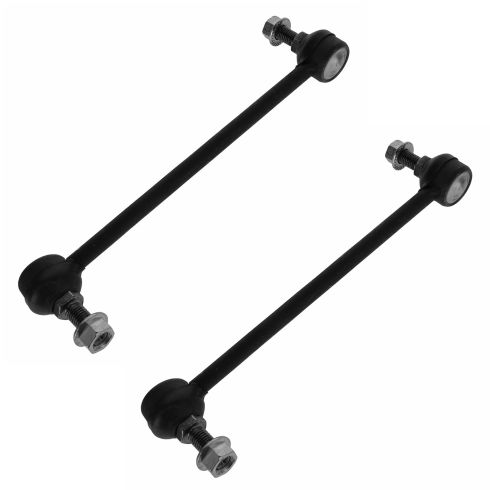1ASFK00276-Toyota Lexus Front Driver & Passenger Side 2 Piece Sway Bar Link Set TRQ PSA55644

Replaces
2021 Lexus RX450h Front Driver & Passenger Side 2 Piece Sway Bar Link Set TRQ PSA55644

Product Reviews
Loading reviews
4.55/ 5.0
22
22 reviews
Great Fit
November 3, 2017
Good service, fast shipping, excellent price and easy installation.
Would recommend.
Excellent
February 6, 2018
Great product, price and quality. And quick delivery.
No brand listed so difficult to tell
July 2, 2018
When I got this, there was no brand listed so I can't tell who makes this. it is not listed on the website either. But it was an easy install on my 2004 ES330. One of the reasons why I bought this particular set of sway bar links is that it comes with a nut on the ball joint side to put an open wrench in when replacing it. This makes it a world of a lot easier than using a hex wrench to hold the bolt like the OEM ones.
August 19, 2018
This product fit correct ,and the other parts I brought ,thank you.
Good product for great price
September 19, 2018
Part was shipped quickly and fit my vehicle. Bolts were slightly oblong, which made them hard to turn with a socket wrench, but was still able to get them on and get back on the road.
June 11, 2019
Great service
July 8, 2019
This is the only thing I received from you guys that did not deliver its promise
order part
January 5, 2020
The part was delivered sooner than expected, great for me. Quality parts for less cost. Will order again from them.
January 5, 2020
Brought the front sway bar links and they work fine so I decided to buy rear ones because it seems like theyre made of good quality and theyre affordable
March 2, 2020
Great product. Fits exactly on my car
Great
May 7, 2020
Fit perfect and works great as well.
Great purchase!!
October 18, 2020
Love the pricing and the quality.
Superior design
April 27, 2021
This is a great design that makes any future maintenance much easier. Considering the low cost these would be good to replace early before the stock parts are too rusted in.
August 11, 2021
Super!
Easy installation and great fitment.
July 20, 2022
Easy information and great fitment.
Amazing fit
November 30, 2022
Completing out my change of my suspension and stability these parts fit well and we're easy to change
Great value
February 15, 2023
Exact fit, perfect to OEM and half the cost of the local parts store.
Works as advertised.
June 27, 2023
Works as advertised.
Good fit
December 12, 2023
Great,no complaints except nuts were defective.Bought some at hardware store and good to go !!
December 16, 2023
Seven de muy buena calidad ??
Better design than OE....
January 2, 2024
Nice design . Looks durable.. easier to remove than the OE . Only need an open wrench in the back and socket in front. The OE is Allen on front... can't use socket on front...
Great product and price
June 5, 2024
Great product and price
Customer Q&A
Is there an install video?
February 19, 2022
10
Yes, we do have installation instructions available for this part. Here's a link for that:
February 19, 2022
Ricale A
Lexus is a registered trademark of Toyota Motor Corporation. 1A Auto is not affiliated with or sponsored by Lexus or Toyota Motor Corporation.
See all trademarks.









